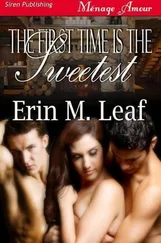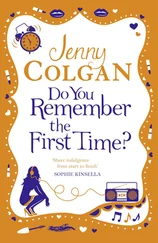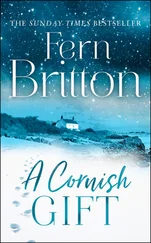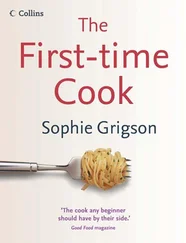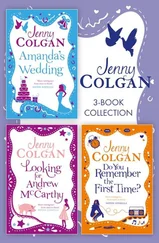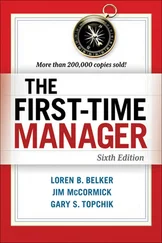ALYSON RUDDwas born in Liverpool, raised in West Lancashire and educated at the London School of Economics. She is a sports journalist at The Times and lives in south-west London. She has written two works of non-fiction. This is her first novel.
The First Time Lauren Pailing Died
Alyson Rudd

ONE PLACE. MANY STORIES

An imprint of HarperCollins Publishers Ltd
1 London Bridge Street
London SE1 9GF
First published in Great Britain by HQ in 2019
Copyright © Alyson Rudd 2019
Alyson Rudd asserts the moral right to be identified as the author of this work.
A catalogue record for this book is available from the British Library.
This novel is entirely a work of fiction. The names, characters and incidents portrayed in it are the work of the author’s imagination. Any resemblance to actual persons, living or dead, events or localities is entirely coincidental.
All rights reserved under International and Pan-American Copyright Conventions. By payment of the required fees, you have been granted the non-exclusive, non-transferable right to access and read the text of this e-book on-screen. No part of this text may be reproduced, transmitted, downloaded, decompiled, reverse engineered, or stored in or introduced into any information storage and retrieval system, in any form or by any means, whether electronic or mechanical, now known or hereinafter invented, without the express written permission of HarperCollins.
Ebook Edition © July 2019 ISBN: 9780008278298
This ebook contains the following accessibility features which, if supported by your device, can be accessed via your ereader/accessibility settings:
Change of font size and line height
Change of background and font colours
Change of font
Change justification
Text to speech
Page numbers taken from the following print edition: ISBN 9780008278281
Praise for The First Time Lauren Pailing Died
‘Stylish, alluring, utterly gripping. An intricate, elegantly written time-slip tale that keeps you guessing until the last page’
LISA O’KELLY, OBSERVER
‘A stylish time-slip story à la Sliding Doors’
GUARDIAN
‘This stunning novel gives you many stories for the price of one. In dealing with grief, love, and luck – and the unfair way they are distributed – it is both very moving and very clever’
MARK LAWSON
‘Beautiful, extremely moving and expertly done, with a lightness of touch that belies the complexity behind the plotting. I loved it (and I cried several times!)’
HARRIET TYCE
‘So many wonderful and unexpected moments … such a unique voice. A very special book’
SARRA MANNING, Red
For Sam and Conor
Cover
About the Author
Title Page
Copyright
Note to Readers
PRAISE
Dedication
PART ONE
LAUREN
PART TWO
LAUREN
BOB
VERA
LAUREN
BOB
LAUREN
VERA
BOB
LAUREN
BOB
LAUREN
BOB
LAUREN
BOB
VERA
LAUREN
BOB
LAUREN
BOB
VERA
BOB
LAUREN
BOB
VERA
LAUREN
BOB
LAUREN
BOB
VERA
LAUREN
BOB
LAUREN
BOB
PART THREE
LAUREN
TIM
LAUREN
BOB
LAUREN
TIM
LAUREN
TIM
BOB
VERA
LAUREN
VERA
LAUREN
TIM
LAUREN
VERA
TIM
LAUREN
TIM
LAUREN
BOB
TIM
PETER
TIM
PETER
Read on for an extract for Eleven Lines to Somewhere
Acknowledgements
About the Publisher
Part One
Lauren Pailing lived in The Willows, a Cheshire cul-de-sac that was shaped like a dessert spoon and as warm and cosseting as any pudding. Every Wednesday morning, sometime between eleven and twenty-past eleven, a big cream van would park at the corner of The Willows and Ashcroft Road. Seconds later, Lennie, who drove the van, would spring out of the driver’s seat, open the double doors at the rear and lower the wooden steps so that the residents of The Willows and Ashcroft Road could climb in and choose their groceries.
The contents of Lennie’s van were unpredictable, so the housewives of The Willows relied on the local mini-market for the bread or biscuits or tinned ham they needed. But when the van arrived, they all made sure to purchase at least one item as a means of ensuring that it was profitable for Lennie to keep them on his route. So it was that Lauren and the other children of the two streets came home from school on Wednesdays to Watch with Mother and a whole array of unnecessary treats: bottles of cream soda, slightly soggy Battenberg cakes and gooey peppermint creams.
To the children of The Willows’ dismay, Lennie took a break over the long summer school holiday – so generally speaking Lauren had to be off school unwell, but not too unwell, in order to jump into his van herself. And this she loved to do. Everything about Lennie enchanted Lauren: the twinkle in his eyes, his creased forehead, his Welsh lilt, the way he added up the bills on a small pad of paper with a too-small pencil. She liked that the van was stocked with as many extravagances as essentials, that the whole operation involved adults behaving like children. It was make-believe shopping; grown-ups pointing at a bag of sherbet dip as if it were a serious transaction.
The very best part, though, was the smell. To enter the van was to be instantly transported to a new world, one that was permeated with the scent of stale custard creams and old and broken jam tarts. Lauren supposed the van had never been cleaned, for there was not one whiff of disinfectant. It smelled only and seductively of years of cakes. It was so old-fashioned that there were no lamps in the back – so the labels of the packets and the bottles were illuminated only by daylight from the open doors or the light that filtered in through the thin curtain that separated the shelves of food from Lennie’s cabin. This was why Lauren’s favourite time to visit the van was on sunny days: when the tiny food hall would be filled with dust sparkling from its contact with icing and sponge fingers.
It was, for Lauren, safe light. Delightful light. She had been inside the van only four times but always felt completely protected. No Santa’s Grotto would ever compare, no Santa’s Grotto ever smelled as lovely. Above all, thought Lauren, no Santa’s Grotto could resist the temptation to overdo the lighting. In the van, Lauren would stick out her tongue, and Lennie would smile because so many children tried to taste the floating sugar splinters, but Lauren seemed to be tasting the light itself.
The Willows was not unreasonably named, as three of the houses had willow trees near their front doors. The street comprised two rows of small semi-detached houses which fanned out to make room for five detached homes, the grandest of which sat at the apex, as if keeping a patrician eye on them all. The grandest house of all had a tall narrow pane of green and red stained glass depicting tiny sheaves of golden wheat above the front door – just in case anybody was in doubt as to its status – and its front and back gardens were twice the size of the rest. Lauren, along with her parents, Bob and Vera, lived at No. 13, the first of the detached houses on the right.
Читать дальше




